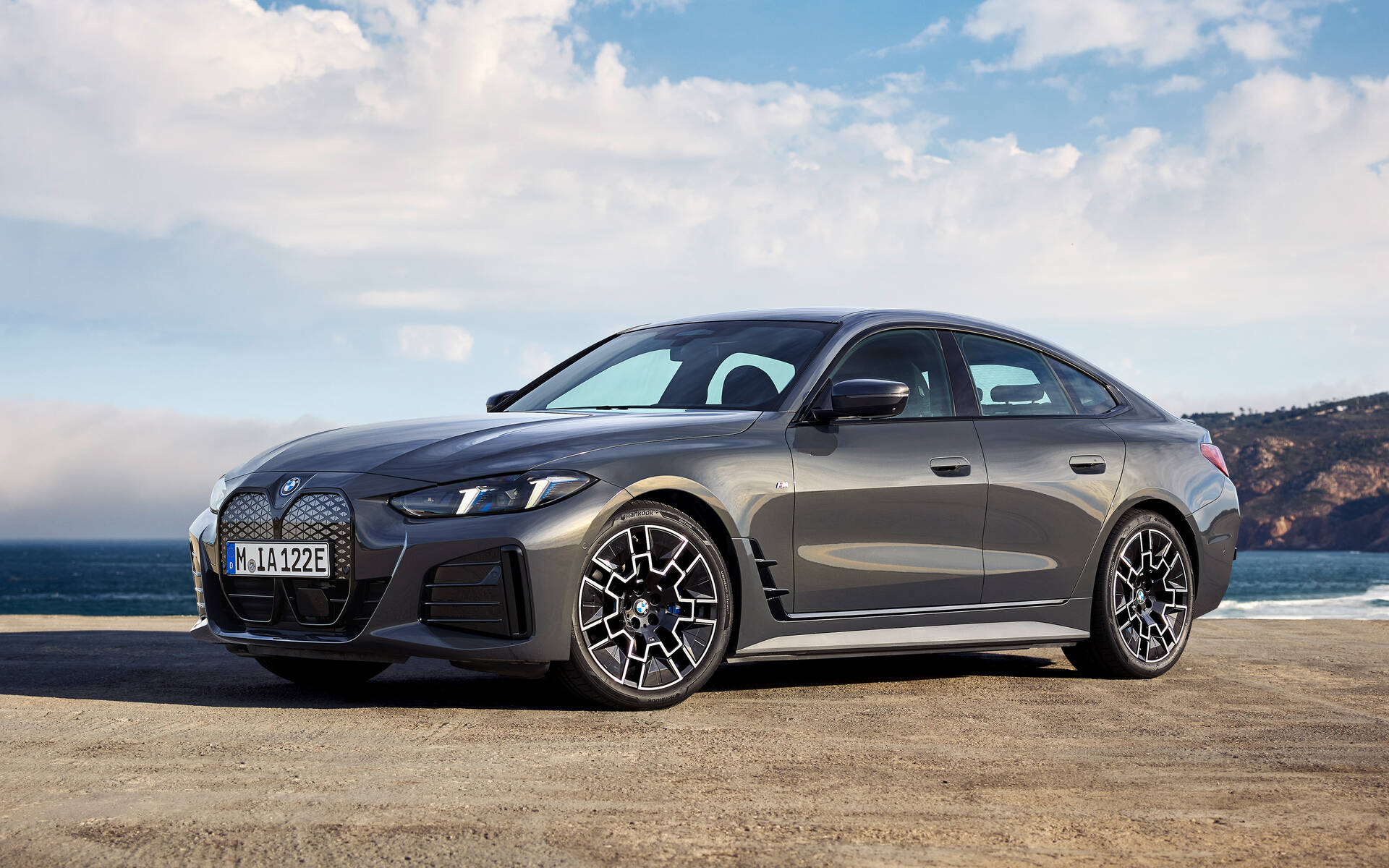Smartphone integration has quickly become one of the most crucial features in modern vehicles.
As drivers increasingly rely on their phones for navigation, music, communication, and even vehicle management, the ability of a car’s infotainment system to seamlessly connect with iOS and Android devices can significantly impact the overall driving experience.
Whether it’s using Apple CarPlay or Android Auto, voice assistants, or proprietary apps, today’s cars are expected to function as digital extensions of our mobile lives.
However, not all systems are created equal. Some manufacturers have gone above and beyond to offer intuitive, fast, wireless, and bug-free smartphone interfaces, while others still struggle with laggy connections, outdated interfaces, or limited compatibility.
In a world where people expect everything to work instantly, a poor connection or clunky user experience can make even a premium vehicle feel frustrating.
In this article, we highlight five cars that offer exceptional smartphone integration, with smooth connectivity, wireless options, and responsive controls.
Conversely, we’ll also examine five vehicles that fall short—where dropped connections, compatibility issues, and outdated systems remind us that technology is only useful when it works well. In a tech-driven market, smartphone integration can be a deal-maker—or a deal-breaker.
Also Read: 5 Trucks with Best Ventilated Seats and 5 with No Cooling
5 Cars With Best Smartphone Integration
Smartphone integration is no longer a luxury feature—it’s an expectation. In fact, for many buyers today, the decision to purchase a vehicle is heavily influenced by how well it connects with their mobile device.
A car can have impressive performance, elegant styling, and even top-tier safety, but if the infotainment system is clunky, unintuitive, or incompatible with popular apps, it can quickly sour the ownership experience.
The best vehicles in this category do more than just support Apple CarPlay and Android Auto—they deliver the experience seamlessly.
That means wireless connectivity, fast pairing, simple voice controls, high-resolution touchscreens, and systems that remember your preferences without requiring repeated setups.
These cars often include wireless charging pads, multiple USB-C ports, and digital assistants that sync with your calendar, messages, and navigation apps in real time.
In this section, we focus on five vehicles that consistently deliver some of the best smartphone integration on the market today.
These cars have been selected not just for their technical specs, but also based on how intuitive and reliable their systems are in daily use.
Whether it’s the clarity of their touchscreen displays, the responsiveness of their voice assistants, or the smoothness of wireless CarPlay and Android Auto experiences, these vehicles represent what the connected car experience should be.
We’re highlighting them because consumers today want their tech to work as fluidly on the road as it does in their pockets. If your smartphone is central to your day, the cars in this list won’t just accommodate it—they’ll enhance it.
1. Hyundai Ioniq 6 – Tech-Centric and Seamlessly Connected
The Hyundai Ioniq 6 is more than just a striking electric sedan—it’s one of the most tech-forward vehicles on the market, and it leads the charge when it comes to smartphone integration.
Hyundai has clearly prioritized the digital user experience in the Ioniq 6, making it a benchmark for how smartphone features should work in a modern car.
Right from the start, the Ioniq 6 supports both Apple CarPlay and Android Auto—and not just the wired versions. It also enables wireless connectivity on nearly all trims, allowing drivers to skip the hassle of plugging in every time.
Once paired, phones reconnect automatically and quickly, with little to no lag. The touchscreen interface is crisp, intuitive, and lag-free, making app access and navigation easy even on the go.
The infotainment system is built around a 12.3-inch central touchscreen that works in tandem with a similarly sized digital instrument cluster.
This twin-screen setup enhances the smartphone experience by allowing drivers to simultaneously view map directions and media controls in a clean and organized layout.
And thanks to Hyundai’s Bluelink system, users can also sync their phone with the car remotely—for climate control, location tracking, and scheduling charging sessions.
One standout feature is the integration of voice control. Whether you’re using Siri, Google Assistant, or Hyundai’s own digital assistant, voice commands for messaging, navigation, or music are processed accurately and swiftly. It feels modern, smart, and hands-free in the best possible way.
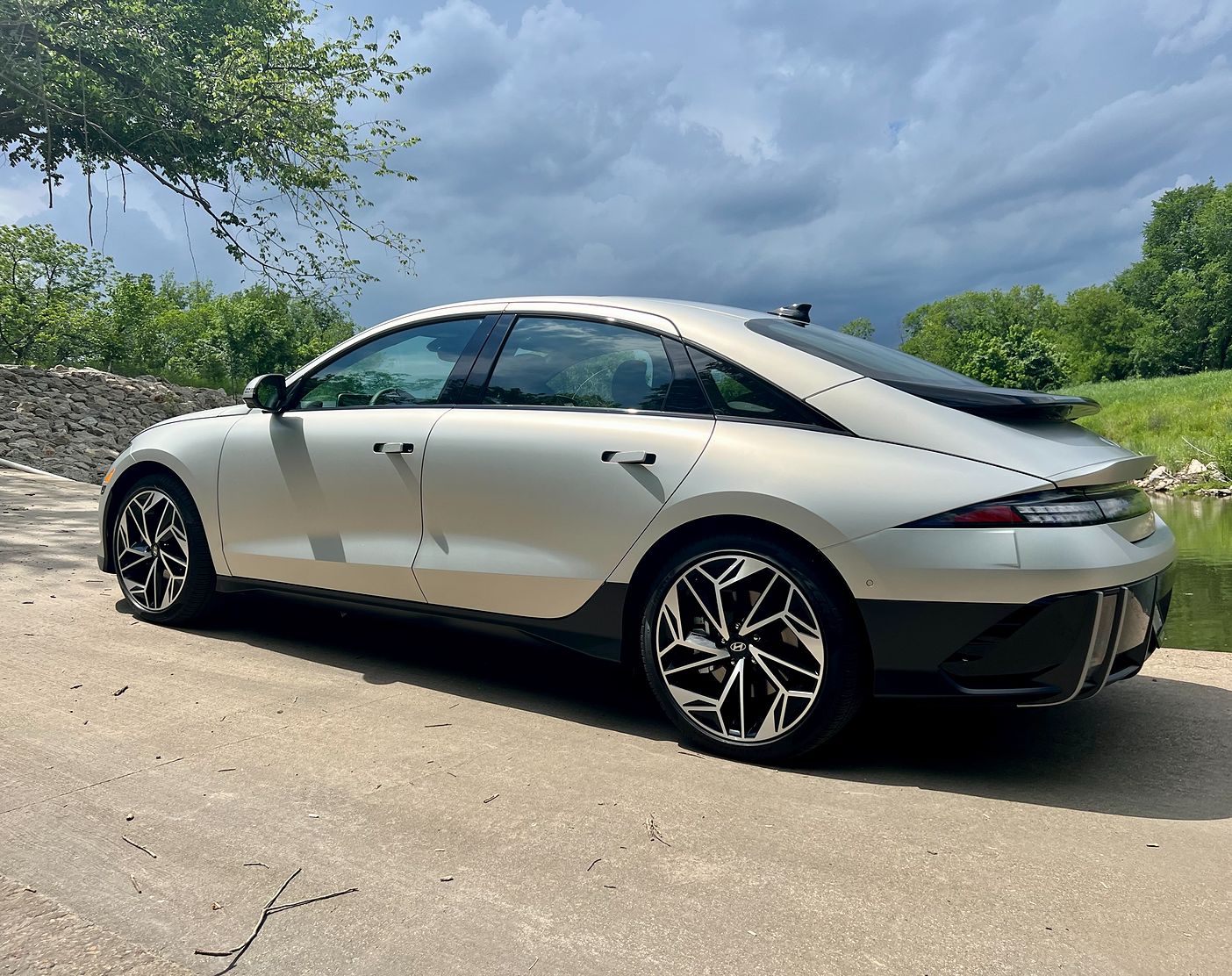
Moreover, the Ioniq 6 doesn’t stop at smartphone mirroring—it’s designed with the smartphone user in mind.
Multiple USB-C ports, a fast wireless charging pad, and thoughtful UI design ensure your phone is not just an accessory, but a core part of the experience.
In an era where tech expectations are sky-high, the Hyundai Ioniq 6 nails the balance of simplicity, reliability, and functionality.
It proves that a car’s ability to integrate with your digital life is just as important as range, speed, or price—and in this regard, the Ioniq 6 delivers one of the smoothest smartphone experiences on the road today.
2. BMW i4 – Luxury Meets Seamless Digital Integration
The BMW i4 brings the brand’s sporty heritage into the EV era, but it also shows just how polished smartphone integration can be when premium engineering meets modern software.
While BMW has had a mixed reputation in the past for making tech too complex, the i4 is a clear pivot toward user-centric, intuitive connectivity—delivering one of the most refined smartphone experiences in any luxury sedan.
The i4 features BMW’s latest iDrive 8 infotainment system, housed on a stunning 14.9-inch curved touchscreen that merges seamlessly with a 12.3-inch digital instrument cluster. This expansive setup is not just visually impressive—it’s also remarkably functional.
Apple CarPlay and Android Auto are both standard and wireless, and the car remembers your device, automatically reconnecting without delays.
What sets the i4 apart is how deeply smartphone features are woven into the driving experience. Navigation apps from your phone show up clearly and responsively. Notifications, media, and calls are organized logically and with minimal distraction.
There’s also wireless phone charging, plus multiple USB-C ports in both the front and rear—making it effortless for multiple users to stay connected.
BMW’s voice assistant, “Hey BMW,” is a standout feature. It can recognize natural language commands, not only for in-car functions like temperature or lighting, but also to control your smartphone.
You can dictate a message, ask for directions via Google Maps or Apple Maps, or switch playlists—all without lifting a finger.
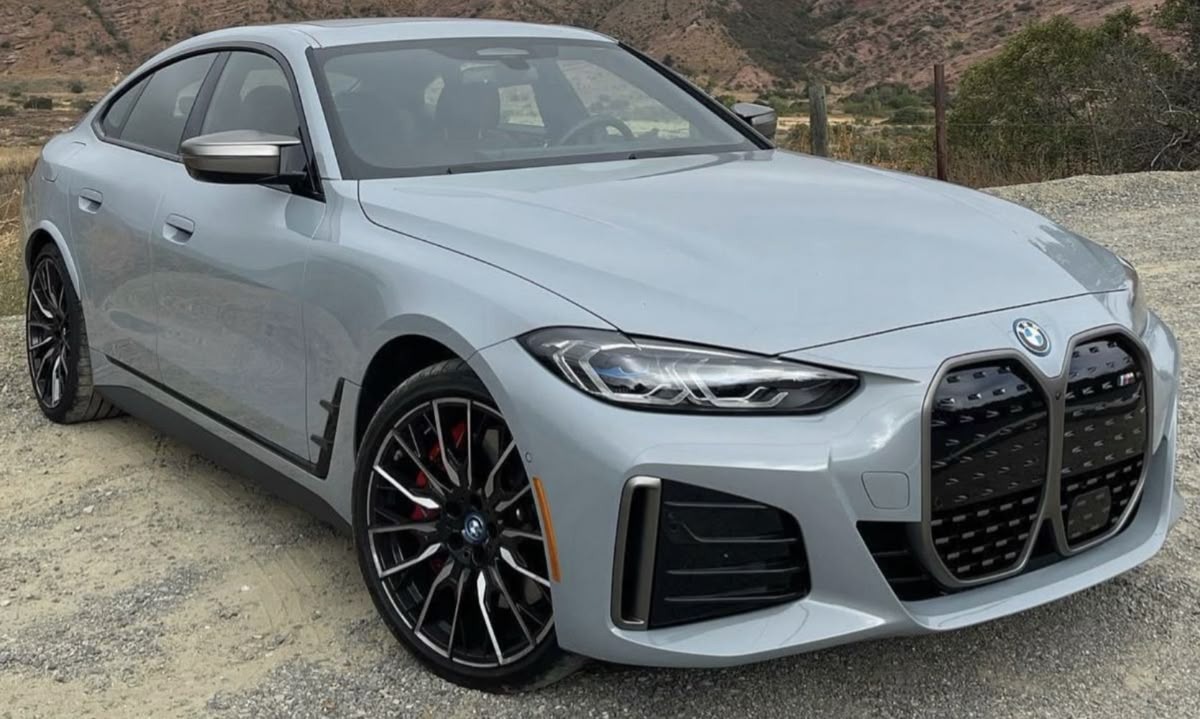
Another advantage of the i4’s system is its over-the-air update capability, which keeps the software fresh and adaptive to future smartphone features.
BMW also integrates My BMW App support, allowing you to remotely pre-condition the car, check charging status, or send destinations directly to the car’s navigation system.
BMW has clearly learned from past criticisms and delivered a user-friendly, flexible, and elegant smartphone integration experience in the i4.
Whether you’re in the Apple or Android ecosystem, the system adapts beautifully and amplifies the luxury experience with effortless tech compatibility.
For those seeking the sophistication of a premium EV without compromising on connectivity, the BMW i4 checks every box.
3. Ford Mustang Mach-E – Mainstream Tech Done Right
The Ford Mustang Mach-E stands out not just for redefining the Mustang nameplate in the electric era, but also for delivering one of the best mainstream smartphone integration setups on the market.
Ford has made sure that tech-savvy drivers feel right at home the moment they step inside the cabin.
At the heart of the Mach-E’s digital experience is a large 15.5-inch vertical touchscreen powered by Ford’s SYNC 4A system. This platform is responsive, well-organized, and designed with simplicity in mind.
One of the major wins here is standard wireless Apple CarPlay and Android Auto across all trims. Setup is painless, and once paired, your phone reconnects instantly every time you get in.
Ford goes a step further by integrating smartphone controls into the FordPass mobile app, which lets users remotely lock/unlock doors, check charge status, pre-condition the cabin, and even locate the vehicle in a crowded parking lot.
This app works in parallel with in-car systems, creating a fluid digital ecosystem that bridges phone and vehicle.
The Mustang Mach-E also features a wireless charging pad, plus USB-A and USB-C ports for both front and rear passengers. That kind of versatility ensures everyone’s device stays powered and connected, whether they’re using Spotify or checking directions.
Voice command functionality, powered through either Ford’s assistant or your phone’s digital assistant, is another area where the Mach-E excels.
You can launch apps, dictate messages, or find destinations all while keeping your hands on the wheel and eyes on the road.
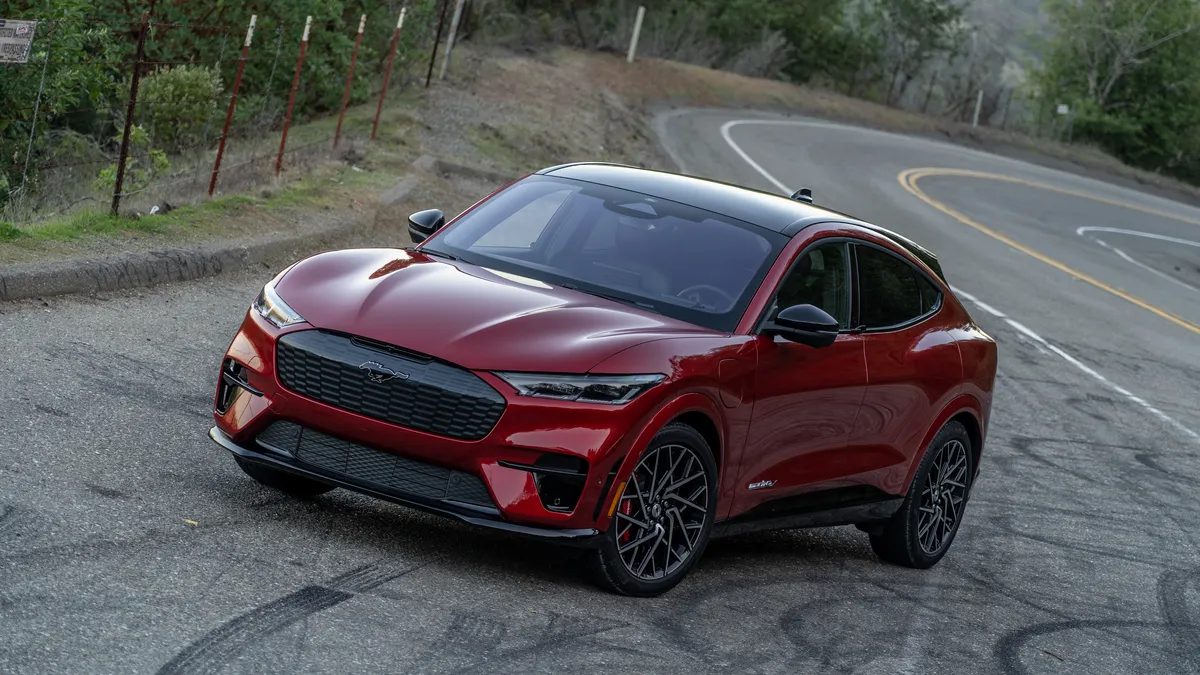
Importantly, the SYNC 4A system receives over-the-air software updates, which means Ford can refine performance, add features, or fix bugs without needing a dealership visit. That makes the tech experience feel fresh even years after purchase.
In sum, the Mustang Mach-E isn’t just a fun-to-drive EV—it’s one of the most connected vehicles in its segment. F
ord has balanced powerful hardware with thoughtful software design to ensure your smartphone doesn’t feel like an afterthought.
Whether you’re using an iPhone or an Android, the Mach-E makes the transition from your phone screen to the dashboard utterly seamless.
4. Mercedes-Benz EQE – High-End Connectivity With Intelligent Design
The Mercedes-Benz EQE is a mid-size electric luxury sedan that blends traditional Mercedes refinement with a cutting-edge tech experience—and its smartphone integration is among the most advanced and polished you’ll find.
Whether you’re an Apple or Android user, the EQE makes the process feel like luxury technology should: elegant, intelligent, and virtually invisible in its seamless operation.
Standard on the EQE is wireless Apple CarPlay and Android Auto, which means you never have to deal with cables or fuss with settings once your phone is initially paired.
The system responds quickly and reliably each time you enter the car, and thanks to the massive 12.8-inch OLED touchscreen (or the optional 56-inch Hyperscreen display that spans the entire dashboard), your apps and functions look vibrant, sharp, and easy to access.
One of the highlights of the EQE is the Mercedes MBUX infotainment system, which is powered by artificial intelligence to learn and adapt to your habits.
If you often call someone at a certain time or open Spotify after work, the system will begin to suggest those actions proactively. It also allows voice control using natural language via “Hey Mercedes,” or via Siri and Google Assistant through your smartphone.
Mercedes has also integrated strong app connectivity via the Mercedes me app, allowing you to manage climate controls, schedule service, lock/unlock the vehicle, and monitor charging remotely.
The smartphone becomes a virtual key in some trims, enhancing convenience without sacrificing security.
In terms of physical features, the EQE offers wireless charging, rear-seat USB-C ports, and ambient lighting that can even reflect your phone’s notification tones—tiny touches that elevate the interaction.
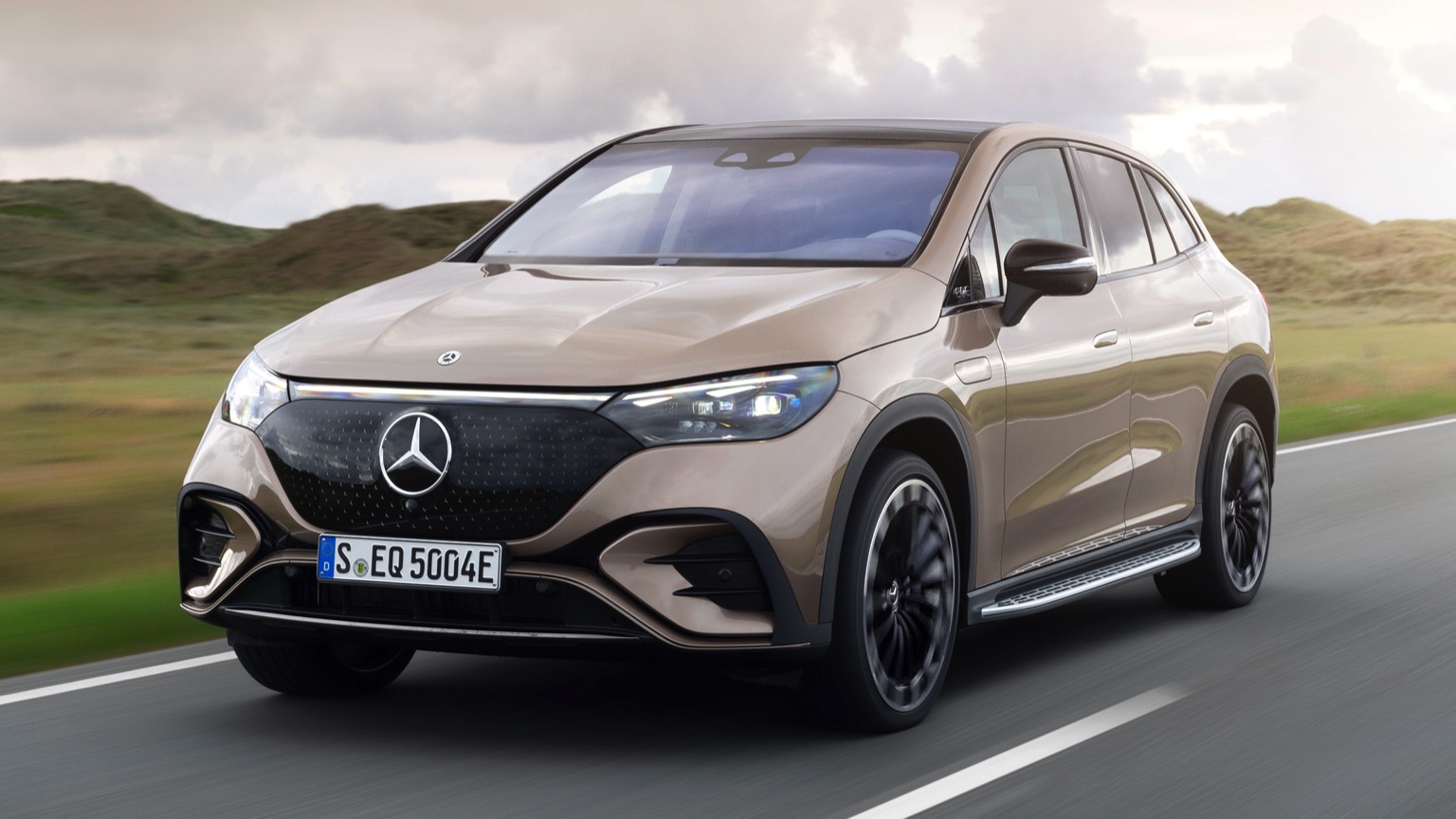
And like many other top-tier vehicles, the EQE supports over-the-air updates, which means the system can grow smarter and more capable over time.
The Mercedes-Benz EQE redefines what it means to integrate a smartphone into your driving experience. It doesn’t just offer compatibility—it offers a level of synergy between your phone and your car that few vehicles can match.
For drivers who want their digital life to blend into a refined automotive space, the EQE sets a very high bar.
5. Kia EV9 – Family-Friendly Tech That Just Works
The Kia EV9 is a bold new entrant in the electric SUV space, but what makes it especially impressive is its attention to practical technology, particularly smartphone integration.
Designed for modern families and tech-savvy drivers alike, the EV9 proves that smartphone features don’t have to be limited to luxury brands—they can be dependable, polished, and user-friendly even in a mainstream three-row SUV.
Standard across trims is wireless Apple CarPlay and Android Auto, which connect quickly and operate without glitches.
The EV9’s system doesn’t require a learning curve—it’s intuitive enough for any driver or passenger to jump in and use right away.
Kia’s latest infotainment interface feels clean and responsive, running on a wide 12.3-inch touchscreen flanked by a second display for digital gauges. There’s also a small third screen between the two, housing climate and quick-access functions.
Where the EV9 truly shines is in usability. The layout of app tiles is customizable, so users can keep their most-used smartphone apps front and center.
Kia also includes multiple USB-C ports in all three rows, along with a fast wireless charging pad up front—perfect for families where everyone wants their device powered and connected.
In addition to mirroring your phone’s screen, the EV9 comes with an enhanced version of Kia Connect, the brand’s companion app.
This allows for remote control of locking, climate, and charging, and even has parental tools to monitor how and where the vehicle is being driven—a thoughtful feature for households with teen drivers.
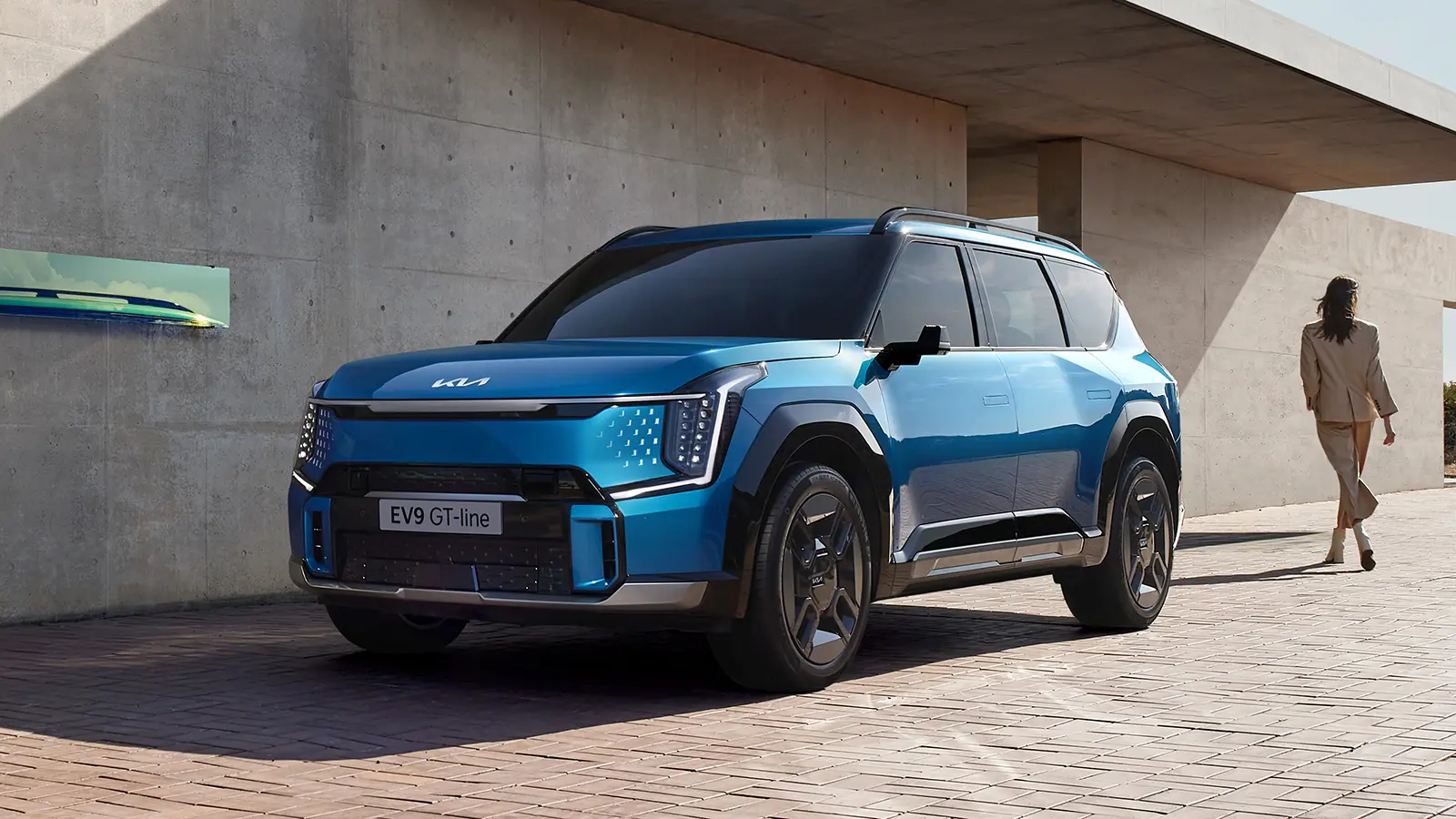
Voice control is available through your smartphone’s digital assistant or the onboard voice recognition, which works well for calling contacts, starting navigation, or changing playlists without touching the screen. It’s not just functional—it’s smooth and unobtrusive.
With its OTA (over-the-air) software support, the EV9 is also built to keep improving, ensuring the smartphone integration experience won’t feel dated a few years from now.
Overall, the Kia EV9 brings together premium-level connectivity with mass-market accessibility, making it an ideal choice for drivers who rely on their phones and expect their car to keep up effortlessly.
5 Cars With Poor Smartphone Integration
In a time when smartphones dominate how we navigate, communicate, and entertain ourselves, one would expect all new cars to seamlessly integrate with mobile devices. Unfortunately, that’s not the case.
Despite rapid advancements in automotive technology, some vehicles still fall frustratingly short when it comes to smartphone integration—and the results can sour an otherwise great driving experience.
From unreliable connections to confusing interfaces and limited functionality, poor smartphone integration often manifests in small annoyances that snowball into daily headaches.
In many cases, these systems fail to support wireless Apple CarPlay or Android Auto, or they only offer it as a pricey upgrade on higher trims.
Others suffer from laggy touchscreens, voice command systems that rarely understand input, or menus that bury essential functions under layers of unintuitive design.
Even in cars that boast flashy screens and digital controls, the execution can leave drivers wishing they had just used their phone’s screen directly instead.
This matters more than ever because, for many users, a car is simply an extension of their digital lifestyle.
Drivers want their playlists, maps, calls, and messages integrated effortlessly—without fumbling for cords or restarting Bluetooth connections multiple times a week. When systems don’t deliver, it doesn’t just lower satisfaction—it can impact safety and usability.
In this section, we’ll highlight five vehicles that fall behind in smartphone integration, either due to outdated systems, missing features, or consistently poor real-world performance.
These vehicles may have their strengths elsewhere—performance, efficiency, or design—but when it comes to syncing with your phone, they leave much to be desired.
By identifying these shortcomings, we aim to help tech-dependent drivers avoid surprises and steer toward vehicles that better align with their digital expectations.
1. Toyota bZ4X – Futuristic Outside, Frustrating Inside
The Toyota bZ4X is Toyota’s attempt at a modern, all-electric crossover, built with sleek styling and environmental ambition.
Unfortunately, when it comes to smartphone integration, this EV lags behind many competitors—especially in areas where you’d expect it to excel.
For a vehicle meant to symbolize Toyota’s electrified future, the tech experience feels undercooked, particularly in how it handles mobile connectivity.
First, and most notably, wireless Apple CarPlay and Android Auto are not available across all trims. On lower variants, users must rely on a wired connection, which feels dated in 2025.
Even then, drivers report inconsistent pairing experiences, random disconnections, and long startup times before the infotainment system acknowledges the phone. It’s not rare for users to find themselves unplugging and reconnecting their phones just to get basic functionality.
Toyota has introduced its new Audio Multimedia system, which sounds promising on paper. But in practice, it’s a mixed bag. The interface can be unintuitive, with a disorganized app layout, small touch targets, and a cluttered user experience.
Unlike rivals that provide snappy responses and customizable widgets, the bZ4X’s system feels like it’s two steps behind in both speed and design clarity.
Voice command functionality is also lacking. While Toyota touts “Hey Toyota” voice assistance, the system often struggles to understand natural language, especially for actions like composing texts or changing music.
Users frequently resort to using their phone’s assistant directly, defeating the point of in-car integration.
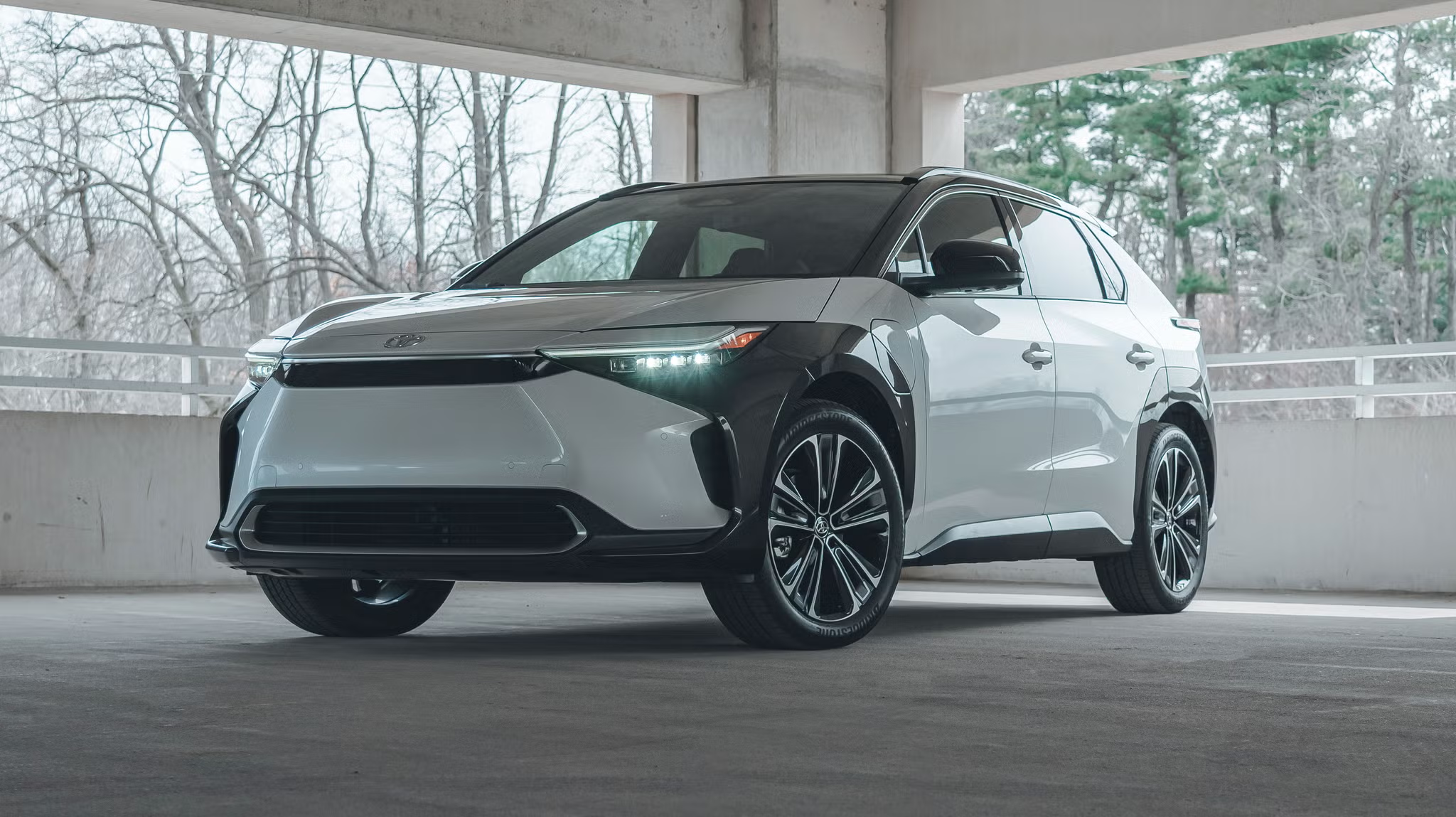
Even the charging pad placement and USB port accessibility feel like afterthoughts. Wireless charging can be finicky and slow, and there are fewer ports than expected in a modern EV, especially for rear passengers.
Overall, the bZ4X feels like a car built with future potential but delivered with current-generation tech shortcomings.
For drivers who expect their phone to be an integral part of their in-car experience, the bZ4X’s inconsistent performance and lack of polish in smartphone integration make it a frustrating choice—especially when compared to what competitors like Hyundai, Kia, or Ford are offering at similar price points.
2. Lexus UX Hybrid – Premium Badge, Outdated Tech
The Lexus UX Hybrid is positioned as an entry-level luxury crossover offering high fuel economy and a stylish design.
However, while it excels in build quality and quiet ride comfort, its smartphone integration experience is sorely lacking—an issue that’s especially glaring in a luxury vehicle where seamless tech is expected as standard.
The biggest frustration with the UX Hybrid lies in its infotainment interface, which relies on the much-criticized Remote Touchpad system on earlier model years.
Even with recent updates bringing a touchscreen option, many UX variants on the road still force users to navigate the infotainment system using a clunky trackpad, making basic tasks like selecting a song or navigating through Apple CarPlay feel like a chore.
The interface is laggy and lacks fluidity, resulting in a disjointed experience when interacting with your phone’s mirrored apps.
Although Apple CarPlay and Android Auto are available, they’re not wireless—and often feel tacked-on rather than well-integrated.
Connection issues, inconsistent sound handoff between the phone and the car, and a noticeable delay when interacting with apps like Google Maps or Spotify diminish the ease of use. You end up spending more time fiddling with the system than actually driving in peace.
Adding to the woes is Lexus’s minimalist approach to USB ports in the UX. There’s just a single USB-A port for data, with others designated only for charging—confusing for users who may expect modern USB-C support or more accessible options for passengers.
The wireless charging pad, though available, is small and often criticized for being ineffective at holding larger phones in place, especially during cornering or sudden stops.
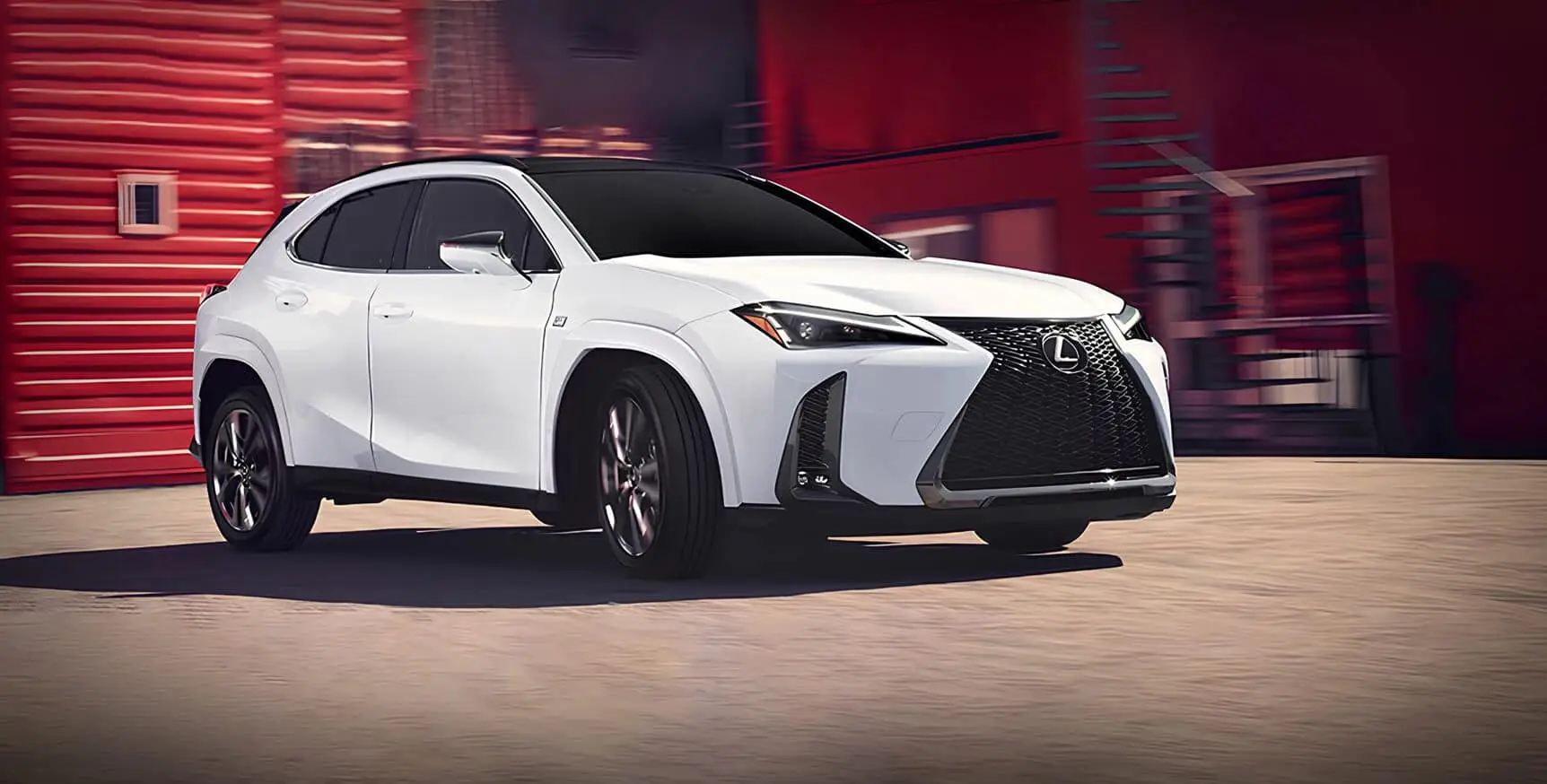
Voice control doesn’t help much either. The Lexus voice assistant lacks natural language processing and frequently misinterprets basic commands, prompting most drivers to bypass it altogether in favor of their phone’s built-in assistant.
Ultimately, the Lexus UX Hybrid’s smartphone integration falls short of the luxury expectations set by its badge.
In a market where competitors like Acura and Volvo are making major strides with smooth, wireless smartphone functionality, the UX feels like it’s stuck in the past—more frustrating than forward-thinking.
3. Subaru Impreza – Rugged Reliability, Rough Tech Experience
The Subaru Impreza has long been praised for its all-weather capability, safety features, and affordable pricing. It’s a practical compact car that appeals to buyers who prioritize function over flash.
However, when it comes to smartphone integration, the Impreza is noticeably behind the curve, delivering a frustrating and often glitchy experience that detracts from its otherwise solid value.
While Apple CarPlay and Android Auto are technically available in most Impreza trims, the system is wired-only, with no wireless option in sight—even in the latest models.
That alone puts it at a disadvantage in 2025, when many competitors in the same price range offer seamless wireless functionality.
For drivers who hate juggling cords every time they enter the car, the Impreza’s setup can feel unnecessarily dated.
The infotainment system itself is a 7- or 8-inch dual-screen layout, depending on trim, and is neither intuitive nor responsive.
There’s often noticeable input lag when switching between screens or launching apps, and the overall UI feels like it was designed several generations ago. Icons are small and poorly laid out, forcing drivers to take their eyes off the road longer than they should.
Another pain point is the frequent connection dropouts reported by users when using Android Auto. Even with a proper cable, many experience intermittent failures, delayed audio handoff, or total disconnection during a drive. These issues are especially frustrating on long trips or during active navigation.
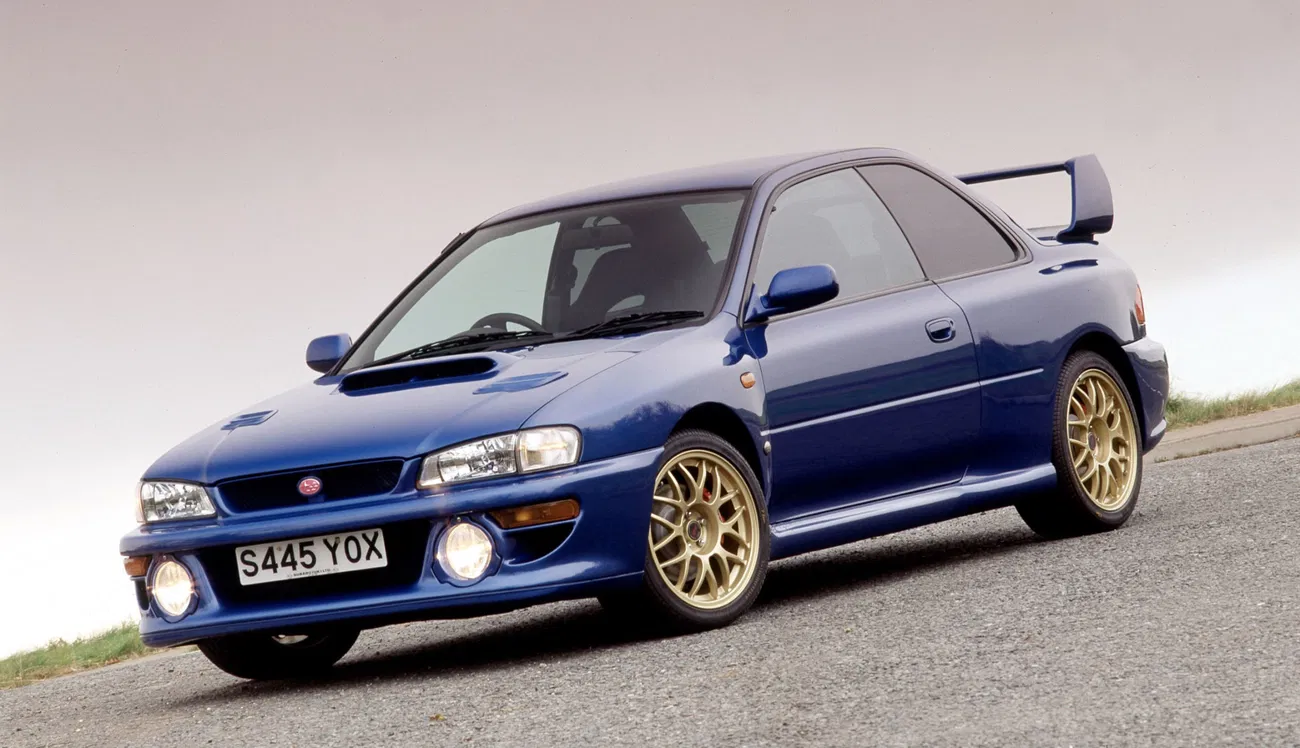
Subaru’s voice command capabilities don’t make up for the system’s shortcomings. The native assistant is rudimentary and fails to understand most natural voice commands.
Drivers often give up and revert to operating their phones directly—which defeats the whole purpose of integration and can compromise safety.
Subaru also hasn’t embraced over-the-air updates, meaning the infotainment system remains static unless you take the car in for service.
In today’s connected world, that’s a missed opportunity to fix bugs and enhance features post-purchase.
The Subaru Impreza may win hearts with its mechanical reliability and all-wheel-drive standard, but if you’re someone who relies heavily on smartphone functionality, it’s a letdown. In an age when even economy cars are evolving digitally, the Impreza’s in-car tech feels stuck in a time capsule.
4. Chevrolet Malibu – Aging Platform, Outdated Tech
The Chevrolet Malibu has been a familiar name in the midsize sedan category for years, known for its comfortable ride and spacious interior.
However, as competitors have rapidly modernized, the Malibu’s infotainment and smartphone integration system has fallen noticeably behind, making it one of the least satisfying options for tech-dependent drivers.
While Chevrolet does offer Apple CarPlay and Android Auto in the Malibu, it is only available via a wired connection in most trims.
Wireless functionality is absent or limited to higher trims—an unfortunate choice in a market where cars half the price are offering wireless integration as standard.
The lack of wireless options makes everyday use feel cumbersome, especially for drivers who want a quick, no-fuss setup as they get into the vehicle.
The Chevy Infotainment 3 System in the Malibu may look clean on first glance, but it’s a case of form over function.
Lag times between input and response are frequent, especially when switching between apps or trying to activate your phone’s voice assistant. The screen is also relatively small at 8 inches, and it lacks the sharpness and fluidity seen in newer competitors.
Voice control, one of the main pillars of hands-free smartphone use, is also disappointing. The Malibu’s built-in assistant rarely understands full or natural commands and is often too slow to respond.
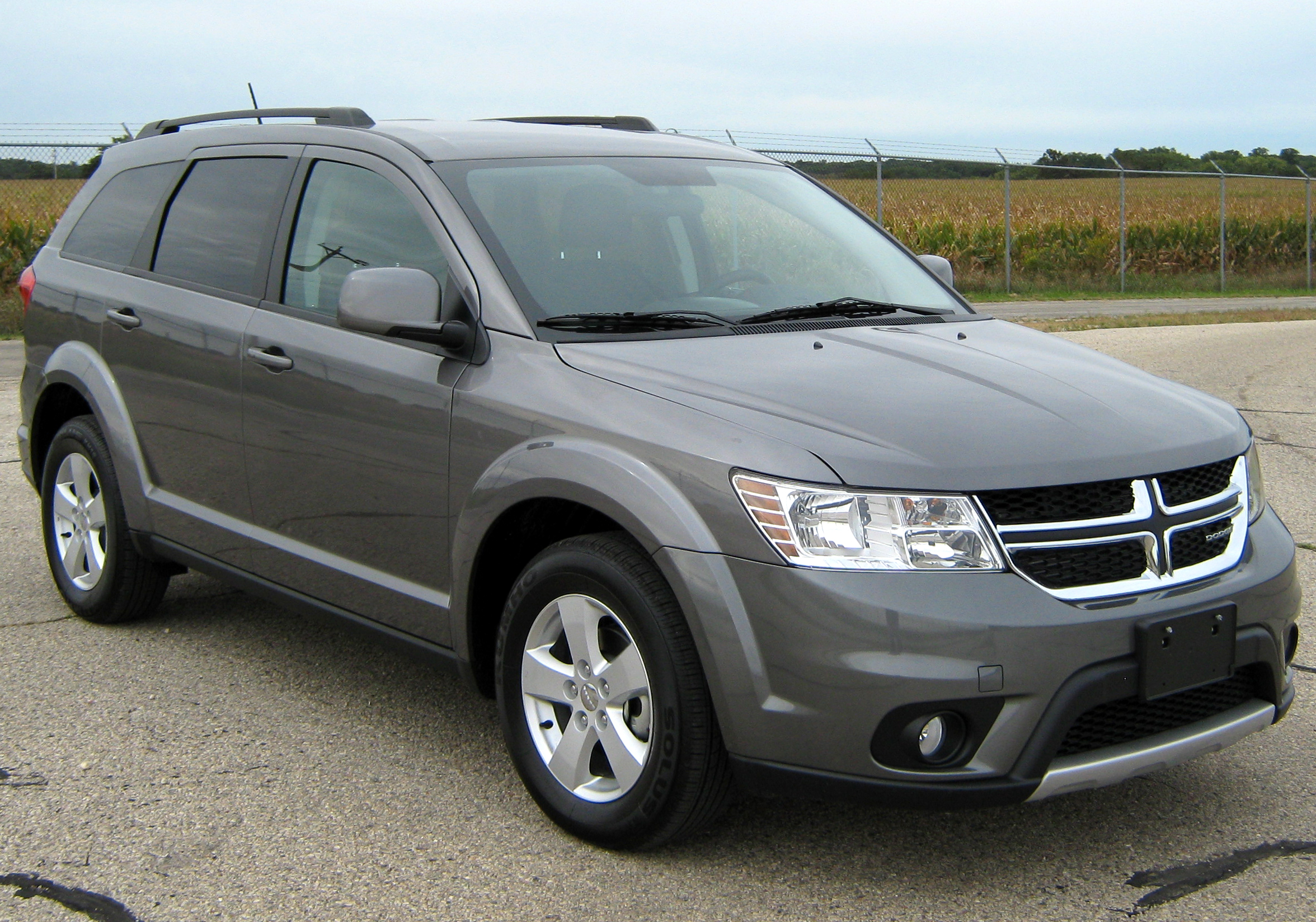
Many drivers simply bypass it entirely in favor of using Siri or Google Assistant directly on their phones—defeating the purpose of hands-free integration.
Chevrolet has also been slow to adopt over-the-air software updates for the Malibu, so bug fixes and new features are limited unless a driver goes into a dealership.
This lack of software adaptability makes the system feel static and outdated, even in newer model years.
Additionally, rear passengers may feel the sting of limited USB ports, and while there is a wireless charging pad in higher trims, it is often finicky and doesn’t hold larger phones securely, causing charging interruptions.
In short, the Chevrolet Malibu delivers a smartphone integration experience that feels at least five years behind the current standard. For buyers who prioritize tech as much as comfort, the Malibu’s limitations in this department are too glaring to overlook.
5. Nissan Frontier – Tough Truck, Weak Tech
The Nissan Frontier recently underwent a major redesign aimed at making it more competitive in the midsize truck segment.
While its bolder styling, refined ride quality, and updated interior are steps in the right direction, the smartphone integration experience continues to feel half-baked, especially when compared to rival trucks from Ford and Toyota.
At first glance, the Frontier’s infotainment setup seems promising. An 8- or optional 9-inch touchscreen sits prominently on the dash, and both Apple CarPlay and Android Auto are included.
However, there’s a major limitation: only Apple CarPlay is available wirelessly, and Android users are stuck with a wired connection. This one-sided support is frustrating in 2025, especially for a segment where rugged, on-the-go utility should pair with seamless connectivity.
Even beyond the connection method, the infotainment software itself is underwhelming. Menus are clunky, transitions are sluggish, and the interface lacks customization.
Drivers often report sluggish response times and unresponsive touch inputs, particularly when switching between system settings and smartphone apps.
Bluetooth pairing and USB connections are inconsistent, too. It’s not uncommon for the system to drop an ongoing call or disconnect Android Auto mid-drive—issues that are particularly irritating when navigating through unfamiliar terrain or managing work calls on the road.
The voice control system is minimal and feels outdated, recognizing only basic phrases and often failing to execute even those.
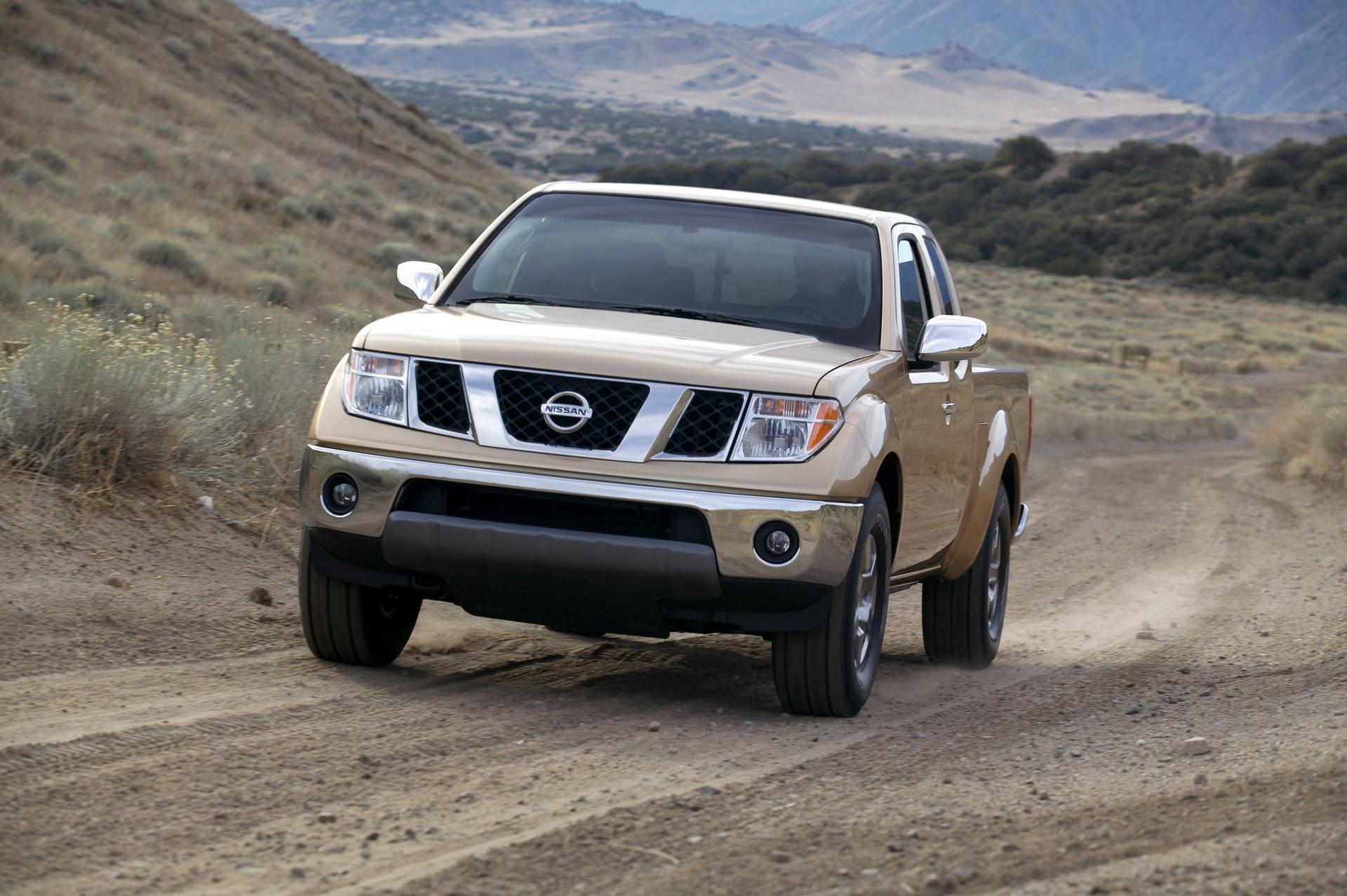
Most drivers ignore it entirely in favor of reaching for their phones, which defeats the goal of integrated, distraction-free use.
Additionally, USB port placement is inconvenient, especially for rear passengers. While a wireless charging pad is available in upper trims, it’s small and known to overheat phones—causing both performance throttling and inconsistent charging.
In a category where trucks are becoming increasingly refined and feature-rich, the Frontier’s tech experience feels like an afterthought.
While it may win points for mechanical simplicity and off-road capability, it does little to serve tech-savvy buyers who expect their truck to integrate with their digital lives smoothly.
Smartphone integration is no longer a luxury or novelty in modern cars—it’s an expected standard.
Whether it’s accessing real-time navigation, music streaming, hands-free texting, or voice commands, today’s drivers demand flawless, intuitive connectivity that mirrors the ease and speed of using their phones directly. As we’ve seen, not all automakers deliver on that promise equally.
The vehicles with the best smartphone integration stand out because they go beyond just offering Apple CarPlay or Android Auto—they make the experience wireless, responsive, and seamlessly embedded into the overall driving interface.
These vehicles understand that connectivity shouldn’t require cords, delays, or frustration. They offer quick-loading systems, easy pairing, and voice controls that actually work. In short, they adapt to the driver’s digital lifestyle without friction.
On the flip side, vehicles with poor smartphone integration aren’t necessarily bad cars overall—but their shortcomings in this critical area can significantly affect daily use.
From laggy interfaces and outdated wired-only connections to glitchy touchscreens and unreliable voice assistants, these tech issues build up over time.
They frustrate drivers, distract from the road, and leave passengers feeling disconnected. In an era where many rely on their phones for navigation, communication, and entertainment, poor integration can sour the ownership experience—especially when the vehicle comes with a premium price tag or a luxury badge.
It’s also clear that some automakers are slower to adopt wireless connectivity, frequent software updates, and consistent user experience design—factors that are increasingly becoming deal-breakers for tech-minded buyers.
Meanwhile, others lead the pack by offering polished, flexible systems that work well regardless of phone brand or trim level.
Ultimately, choosing a car today isn’t just about horsepower, MPG, or cargo space—it’s also about how well the vehicle connects to your digital world.
For those who spend hours each week behind the wheel, a strong smartphone integration system isn’t just convenience—it’s essential.
As automakers continue evolving their tech offerings, the gap between the best and the worst will grow ever more noticeable, making it more important than ever to research before you buy.
Also Read: 5 Pickups With Largest Beds And 5 With Smallest Beds

